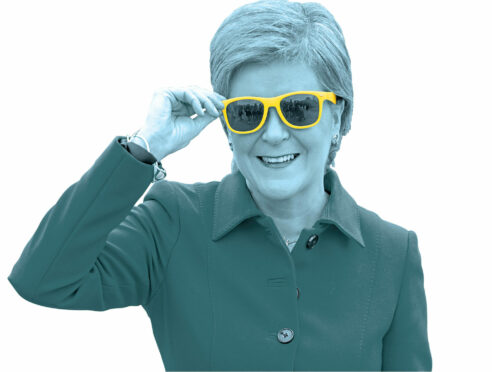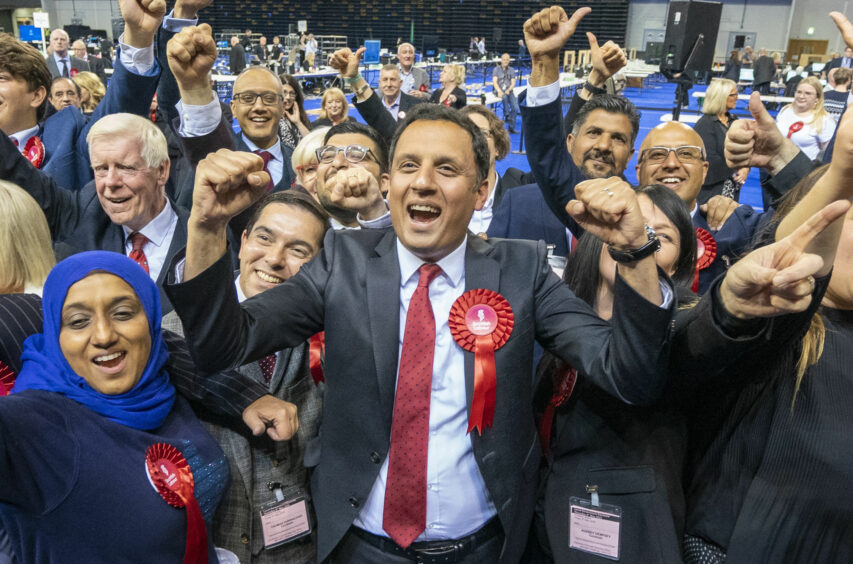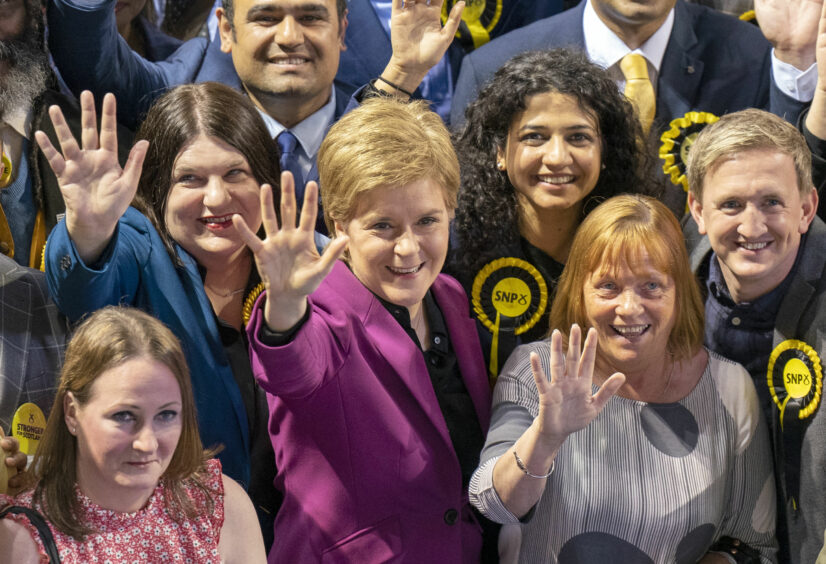
Boris Johnson’s failure, despite his many promises, to get Brexit done could lead to his downfall, according to Professor Sir John Curtice.
The leading polling expert believes the local government election results showed voters, particularly in Northern Ireland, fear increasingly negative consequences of leaving the EU.
He said the Northern Ireland Protocol – which governs the post-Brexit movement of goods between the Republic and the north – had fragmented the vote in Northern Ireland as Sinn Fein are tipped to become the biggest party.
Curtice, of Strathclyde University, said: “These results confirm that the Conservative party is in electorally choppy waters. They are mortal, they are not invulnerable.
“Just in case anybody thinks Brexit is done, it isn’t done. Northern Ireland is still not sorted. It was Northern Ireland that undid Theresa May.
“Boris Johnson tried to solve it by agreeing to the Northern Ireland protocol and it is still not managing to resolve the issue. Sinn Fein’s vote is up very narrowly but the reason we have Sinn Fein first in Northern Ireland is because of the fragmentation of the unionist vote.
“And that fragmentation is very much to do with the Northern Ireland protocol, which is the legacy of Brexit.”
Unionists in Northern Ireland are opposed to the protocol, the part of the Brexit withdrawal agreement which avoids a hard border on the island of Ireland by placing a customs and regulatory border in the Irish Sea.
They claim it damages Northern Ireland’s economic and constitutional position within the United Kingdom.
Curtice added: “What we have seen is the fragmentation of the Unionist community engendered by the divisions within the community over Brexit and then over the Northern Ireland protocol.
“It is clear that the DUP will not nominate a deputy first minister in the circumstances and they will only swallow that bitter pill if the Northern Ireland protocol is radically altered by the prime minister.
“If he tries to do that he then runs the risk of starting a row with the European Union and he might end up with trade between Great Britain and the European Union being disrupted.
“So we are still in this situation of looking at how do we deliver Brexit in a way that is acceptable to Northern Ireland. Five years on, we still do not have the answer to that. I think that is the real message of these elections.”
In Scotland, he said, the progress of the Greens, who more than doubled their councillors to 35, was one of the most significant developments revealed in the results. He said the Greens had “tweaked the tail” of Nicola Sturgeon and the SNP by splitting the pro-independence vote. He said: “It’s noticeable that where the Greens did particularly well, they did so at the expense of the SNP.
“They certainly caused the SNP some grief in Glasgow. It raised the risk to the SNP that they’ve enhanced the Greens’ credibility with the coalition agreement.
“It’s clear that as Nicola Sturgeon tries to make the case for independence and holding a referendum, she is going to have to listen to Patrick Harvie a bit more than she was previously inclined to do.”
Labour now needs to target pro-indy supporters
By Alan Roden, former communications director for Scottish Labour
Three years ago, Scottish Labour slumped to an abysmal 9% and fifth place in a national election.
The architects of that humiliation have gone, and the party finally has something to cheer after so many years of pain.
At Scottish Labour’s third-floor HQ in an office block on Glasgow’s Bath Street, recent celebrations have been limited to individual heroics by the likes of Ian Murray, Jackie Baillie and Daniel Johnson.
But under the energetic leadership of Anas Sarwar, there is newfound hope. In the 2021 Holyrood election, just weeks into the job, he kept Scottish Labour alive by winning over voters with his charm, even if the party brand remained tainted.
In his first real electoral test this year, he has moved the party back into second place.
Yes, the collapse of the Tories made this considerably easier, but Labour also ran the SNP close in Glasgow much to the nationalists’ surprise.
There is some easy-hanging fruit for Scottish Labour as the revival project continues – centrist voters who were won over by Ruth Davidson, and soft pro-UK voters who back the SNP for reasons other than the constitution.
But ultimately, the path back to power in Holyrood requires Labour to win over swathes of pro-independence SNP supporters.
Labour is the only party which can ever replace the SNP in government, yet, after another resounding victory for Nicola Sturgeon, that remains a daunting challenge while constitutional politics continues to dominate.
Predictions of the SNP’s demise wrong again
By Stephen Gethins, professor of practise in international relations at St Andrews University and a former SNP MSP
Tuesday last week marked the 15th anniversary of the SNP’s first historic win when it beat Labour to take power at Holyrood.
Whilst other governing parties complain of “mid-term blues” the SNP marked the anniversary by recording its best-ever local elections results. It is a remarkable achievement by any standards, with the SNP winning more seats than ever and more gains than any other party in Scotland.
Since taking power, commentators have regularly predicted the demise of the SNP, and have regularly been proved wrong. That was to be the case again on Thursday when the party defied political gravity with an 11th national election win on the trot.
The SNP leadership will rightly be pleased with these results. After a decade and a half in power the party remains popular and the SNP ambition of delivering independence remains a vote winner. Those who stood on a platform of beating the SNP and rejecting independence once again lost heavily.
These were local elections to deliver local services, but it is part of a set pattern.
That provides a challenge for all political parties and governments. The SNP win on a clear commitment to deliver an independence referendum and the pro-Union parties consistently lose elections on a commitment to deny one.
This will add pressure on parties to deliver on that commitment and some hard conversations. Elections are about legitimacy to govern and delivering on promises. Holyrood and Westminster were not on the ballot but these elections will be consequential for both.

Enjoy the convenience of having The Sunday Post delivered as a digital ePaper straight to your smartphone, tablet or computer.
Subscribe for only £5.49 a month and enjoy all the benefits of the printed paper as a digital replica.
Subscribe
 © Jane Barlow/PA Wire
© Jane Barlow/PA Wire